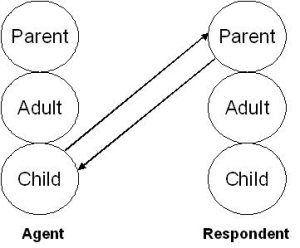I followed two recent Software Testing Conferences on Twitter, Eurostar 2015 (I took part in the mobile deep dive day) and Agile Testing Days. What struck me was the difference in management styles that were promoted in contrast to what most people experience in their day job.
This blog is about what I perceive to be one of the differences – Transformational Leaders vs Transactional Leaders.
Starting with the latter the Transactional Leader is the typical ‘stick and carrot’ type. The goal is compliance promoted through rewards and punishment. The emphasis is on maintaining the status quo by rooting out apparent faults and deviations from the process driven way of working. Apparently this is supposed to work well in a crisis, same as micromanagement, I do have my doubts.
The goal for a Transformational Leader is creating a self-sufficient team that can handle any of the numerous changing aspects of modern software development projects. The underlying idea is that there’s more intelligence and ideas in a whole team than in a single person. The leader serves the team by providing guidance and removing obstacles.
The four components for the Transformational Leader according to Wiki are
- Idealized Influence (II)
- Inspirational Motivation (IM)
- Individualized Consideration (IC)
- Intellectual Stimulation (IS)
That view is very focused on the leader rather than what the changes mean for the team and and how to get there. So I’m using a slightly different model using the four aspects below. I used the original (sub-)points from Wiki but also added a few of my own.

- Environment – how the work environment has to change to reach our goal
- Individual – what changes for the individual (with help from the leader)
- Team Identity – promoting moral standards for the whole team that everyone can identify with
- Leader tasks – how the leader can help reach the team’s goals
These aspects form the framework that a Transformational Leader is aspiring to. Before we get there we have a few pre-requisites that have to be in place, otherwise the change (and leader) is doomed to fail.

These are not hard and fast rules, for example trust from the team and senior management will grow over time but a base level has to be present.
While implementing the changes and working with the team I learned a couple of golden rules over time.

Most rules are self-evident, a few had to be learned the hard way though. Hopefully someone will find them useful and will not step into all the traps I encountered along the way.
That concludes the first part of the Transformational Leadership blog. The next will describe a few examples based on my experience.
If you have any comments or suggestions how to improve any of the above please leave a comment.



